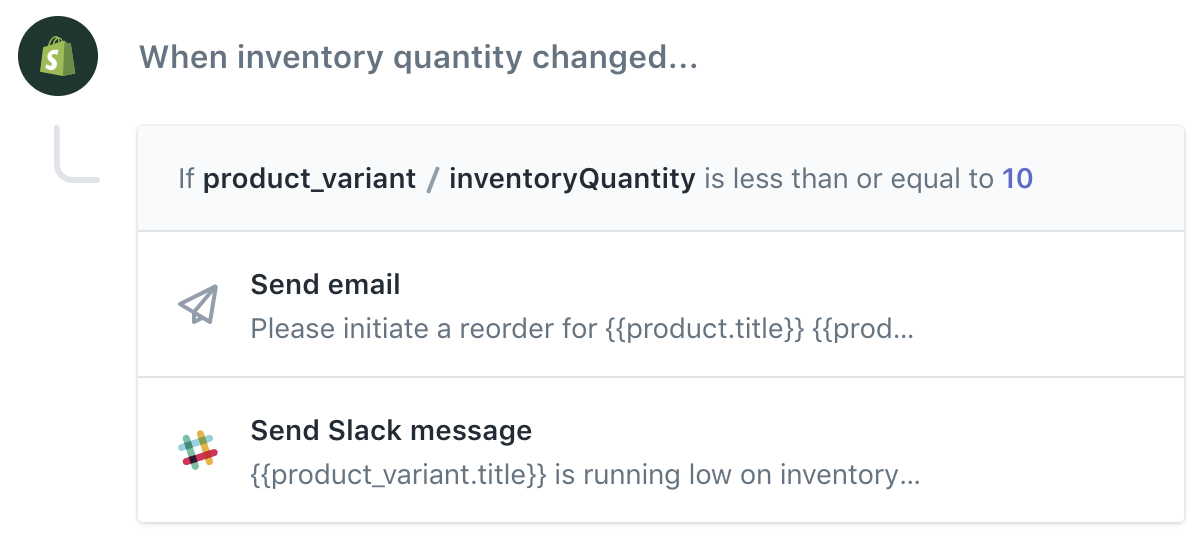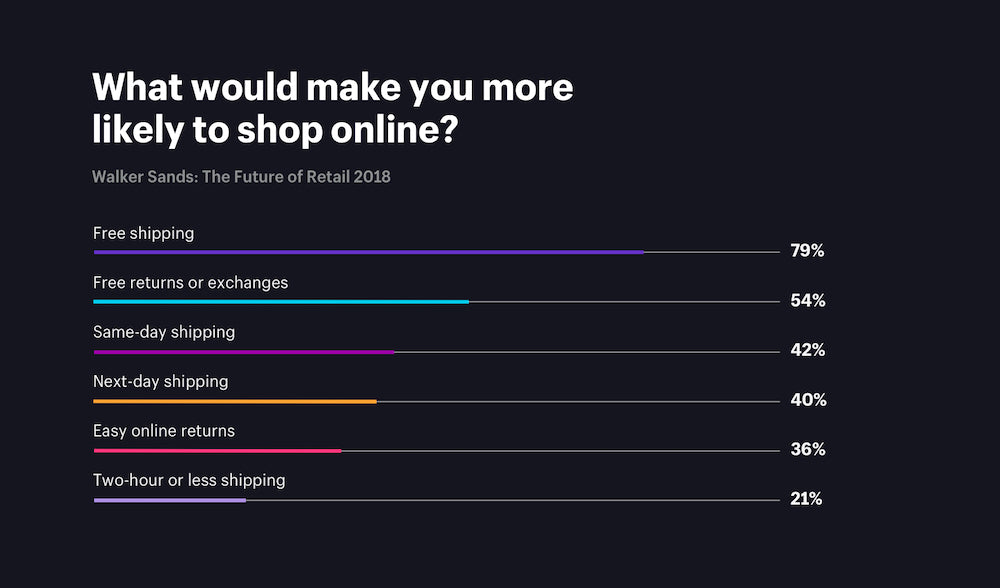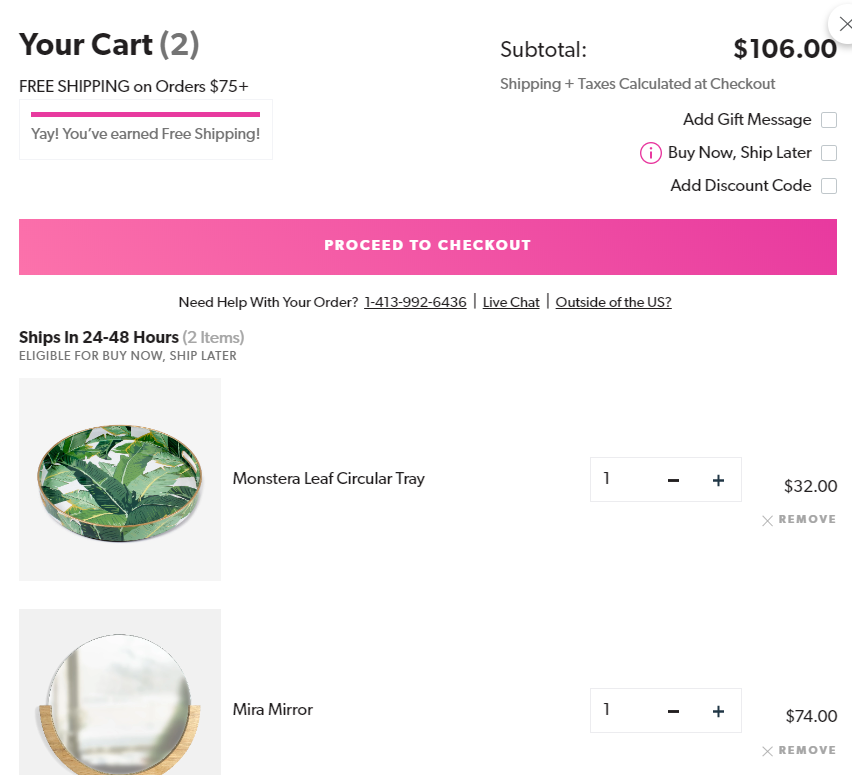You’ve spent the past few months locking in your holiday promotional strategies. And last year’s total holiday online shopping results—which hit $123.73B and 16.6% growth year-over-year—are a good sign your sales will surge in the coming months.

Before you launch this holiday:
- Check your inventory levels—can you fulfill customer orders during high-volume shopping days?
- Can you compete with the likes of Amazon and Walmart by offering fast, free, and reliable shipping options?
We’ll explore six ways to manage your inventory levels and ship your products to customers just in time for the holidays.
Plan for unexpected stockouts
Holiday retail salescrossed the trillion-dollar mark last year, which is encouraging for the upcoming season. But what happens if yousell out all of your inventory unexpectedly?
It can be avoided with a few simple strategies.
1. Monitor inventory levels
Using your ecommerce platform tools,set up trackingto monitor your inventory levels during the busy season. Proactively look for seasonal trends in your inventory history to safeguard yourself from any surprises.
规划一个弹出在假期里?或计划on moving inventory into additional warehouses or spaces?
- Track and monitor your stock across multiple locations
- Adjustinventory levels simultaneously for different products
- Manage andchange inventory quantities by online or retail store locations
Managing back-end workflows through automation can also help you with inventory levels.
2. Set up automatedinventory managementworkflows
Keeping inventory levels up-to-date can be tough on high-volume shopping days when your team is busy. That’s where ecommerce automation is helpful. For example, you can automatically remove products from your site to avoid disappointing customers because of stockouts.
Shopify Flowworks with the inventory monitoring tools mentioned earlier. It automates nearly any customer-facing or back-office process you can imagine. Additionally, it stores and executes triggers, conditions, and actions you specify, without any coding.
You canautomate business tasks for Black Friday and Cyber Monday, such as:
- Customer service
- Fraud prevention
- Design and development requests
- Merchandising
- Marketing and advertising
- Managing inventory
A workflow like this one can send you a Slack message that says your inventory levels have dipped below 10 items:

The next step in fulfilling a customer order is, of course, to pack and deliver it. Since shipping can be extra stressful over the holidays, let’s look at some best practices.
Ship like Amazon
When it comes to shipping, customers care about three things—free, fast, and flexible shipping options.
3. Make free shipping work for you
Free shipping is a dealbreaker for most online shoppers—more than speed or a flexible return policy.

Unfortunately, free shipping is far from free for retailers. Start bydetermining what your free shipping thresholdis to make a profit. Look at your median and average order values (MOVs and AOVs) to help you figure it out.
The threshold should be set high enough above your MOV or AOV to encourage customers to spend more. Communicate this threshold throughout the buying experience by advertising it in promotional emails, on your homepage, in-cart, and at checkout.
You can also use Shopify Shipping Scripts (with UX customizations) to indicate how much more customers need to spend on the fly. Or offer a free shipping discount code they can use anytime. Reviewthese five shipping script templatesor createyour own shipping scripts.
Additionally, you can pre-bundle or put items into a “kit” that are frequently bought together, based on purchase histories and trends. This will save time and increase the percentage of orders that ship in flat rate containers.
For example, Knixwear offers“Save on Sets” bundles, where you get a discount for purchasing a bra and three pairs of underwear together. They offer free shipping over $75, so many of their sets would qualify.
Also, consider only using flat rate shipping containers.
Naturally, the further away a customer is, the more expensive it is to ship. So if your one fulfillment center is based in LA, like theEmazingLights team’s once was, you’re going to spend a lot to ship to New York City. But if you use multiple centers across the country, perhaps with athird-party logistics (3PL), and package your items in flat-rate containers, you can save more money.
In fact, the EmazingLights group adjusted its product offerings and packaging to fit into flat rate containers. They did this by:
- Identifying the dimensions of flat-rate containers
- Comparing those container sizes with best-selling products
- Redesigned packaging for best-sellers to fit inside a flat-rate shipping box
Now the team can ship a best-seller across the country for a flat rate of $6.35 instead of $9.59.
Shipping at a flat rate is important, and shipping quickly matters too.
4. Provide timely delivery based on geography
Outsourcing your shipping to a 3PL with a network of fulfillment centers—across the country or globe—will help you slash shipping costs and lift profit margins. You’ll also get those packages out faster, and offload the time and stress of managing logistics in-house.
Here are some of the ways 3PLs can help:
- They handle large shipment volumes for thousands of businesses to offer discounted rates with all carriers and services
- You can use your own custom-branded boxes or use the 3PL’s standard boxes, packing expertise, and尺寸重量优化
- There’s no need for you to invest in the infrastructure to ship globally
- You also don’t have to pay for warehouse equipment, utilities, technology, staff, or worry about complying with regulations and obtaining the right licenses
- You can optimize where you store your inventory within the 3PL’s fulfillment network and more easily expand into new markets
Additionally, 3PLs are modernizing their strategies and technology for greater efficiencies and optimizations. ShipBob has a guaranteedTwo-Day Express Shipping Programfor Shopify Plus businesses.
You’ll have to integrate ShipBob with your store and stock your inventory in their fulfillment centers. After a customer enters their shipping destination, ShipBob will validate the zip code and items ordered against inventory counts in each ShipBob fulfillment center in real-time.
Only customers whose orders qualify for the discounted two-day shipping option will see the new shipping option. The order will then be shipped from the closest fulfillment center to the shipping destination.
Don’t forget about meeting last-minute delivery deadlines, and setting customer expectations if you can’t.
5. Prepare for last-minute shipping demands
More than any other time of year, customers are more likely to abandon their carts if they won’t receive their package on time during the holidays. When it comes to your business’ reputation, abandoned carts are the lesser of evils when compared to customers becoming enraged after purchase when their order doesn’t arrive before December 25. When that happens, their trust in your business is broken.
That’s why you must have a solid last-minute shipping plan. Here are two dates to keep in mind:
December 9: Green Monday
The term Green Monday was created by eBay in 2007. It refers to the Monday that’s ten days before Christmas. Holiday shoppers need their gifts in time, so communicate when packages will arrive closer to the deadline.
December 13: Free Shipping Day
On Free Shipping Day, participating ecommerce stores offer free shipping on specified items and guarantee delivery by Christmas Eve.
If an item added to cart on that day won’t arrive on time, customers need to know immediately.
There are several apps available on the Shopify App store that help you tocommunicate estimated delivery times on the checkout page, without coding knowledge. Thesame can be done on your product pages.

After all this talk about shipping and fulfillment, don’t forget about post-holiday returns.
6. Don’t forget to optimize returns, too
The excitement and frenzy of Black Friday and Cyber Monday deals motivate many shoppers to make impulse purchases. Receiving a high number of cancellations and return requests just after those sales are, therefore, inevitable.
According toReturn Magic, “89% of repeat customers who had a good return experience are likely to buy again.” In fact, an easy return experience is nowtable stakes to compete with the likes of Amazon. Therefore, it’s necessary to:
- Create specific Black Friday policies for final sale and discounted items
- Invest in automation to handle large volumes
- Offer many ways to refund your shoppers and leverage gift cards
- Be transparent, send email updates, and make tracking simple
Find a solution that lets you automatically generate labels, refunds, and emails to save time and enhance your customers’ shopping experience.
US merchants using Shopify Shipping cangenerate return labels directly in your admin.
Shipping and fulfillment during the holidays can be pain-free
High sales growth over the holiday season is what every merchant wants. To close the deal, satisfy, and retain customers, you’ll need a strong shipping and fulfillment strategy.
Make shipping free—even if you have to set the minimum order value a little higher. Or, bundle products to make the cost work in your favor. You can also set affordable flat shipping rates, based on geography.
Also, make sure you can get packages to customers quickly and before the cut off date. It might mean outsourcing to a 3PL partner.
Finally, don’t forget to make returns easy and free as well when possible. At a minimum, be sure to provide a clear return policy, so customers are aware before they make an impulse purchase.






